Basic Concept
The Nisshinbo Group's Business Conduct Guidelines include Awareness and Concern towards its environmental impact. The Group provides energy conservation technologies, products, and services, as well as its own energy conservation measures, and faithfully realizes a safe and secure society for all people.
【Main measures】
- ① Promoting activities to curb energy consumption through ISO 14001 activities
- ② Selecting environmentally friendly equipment when renewing equipment and continuously implementing energy conservation measures through improvement activities
- ③ Systematic use of LEDs for lighting
- ④ Pursuit of the introduction of energy conservation equipment in new buildings and warehouses and the reduction of energy consumed by air conditioning
Please refer to "Promotion System" in "Environmental Management" for the promotion system.
Specific Initiatives of The Nisshinbo Group
Assessment of the 5th Three-Year Environmental Targets (to be achieved by FY2024)
The Nisshinbo Group established the 5th Three-Year Environmental Goals (5th Sustainability Promotion Plan) with the fiscal year ending FY2024 as the target year, setting the promotion of environmental management as a priority activity and establishing the following KPIs to promote Reduction of the energy consumption per unit of sales.
Reduction of the energy consumption per unit of sales: Reduce by 15% or more compared to FY2014
As a result of systematic measures to manage reductions through the PDCA cycle, the Group's result in FY2024 was reduced by 39% compared to FY2014. In addition to steady progress in energy conservation measures in each business, the main factors were the transfer of the TMD Group, a subsidiary in the Automobile Brakes business that consumed a large amount of energy, and a reduction in production in the Micro Devices business.
Assessment of the 6th Three-Year Environmental Targets (to be achieved by FY2027)
In the 6th Three-Year Environmental Targets (6th Sustainability Promotion Plan), which will be achieved in FY2027, the KPI values have been increased in line with the initiatives of the fifth period.
Reduction of the energy consumption per unit of sales: Reduce by 30% or more compared to FY2014
Please refer to "Environmental Management" for details regarding of the "3-Year Environmental Targets."
Please refer to "Sustainability Promotion Plan and KPIs" for details regarding of the "Sustainability Promotion Plan."
Energy Use by Type of Fuel
The Nisshinbo Group's energy usage in FY2024 amounted to 6.41 million GJ, down 26% year-on-year (YoY). Energy usage per unit of sales was 12.96 GJ/million yen, down 20% YoY. In addition to the steady progress of energy conservation measures in each business, the main factors were the transfer of the TMD Group, a subsidiary engaged in the Automobile Brakes business, which consumed a large amount of energy, and reduced production in the Micro Device business.
By type of fuel used, electricity accounted for 86% of the total, and gas accounted for 8%.
Trends in the Amount of Energy Consumed and the Amount of Energy Consumed per Unit of Sales
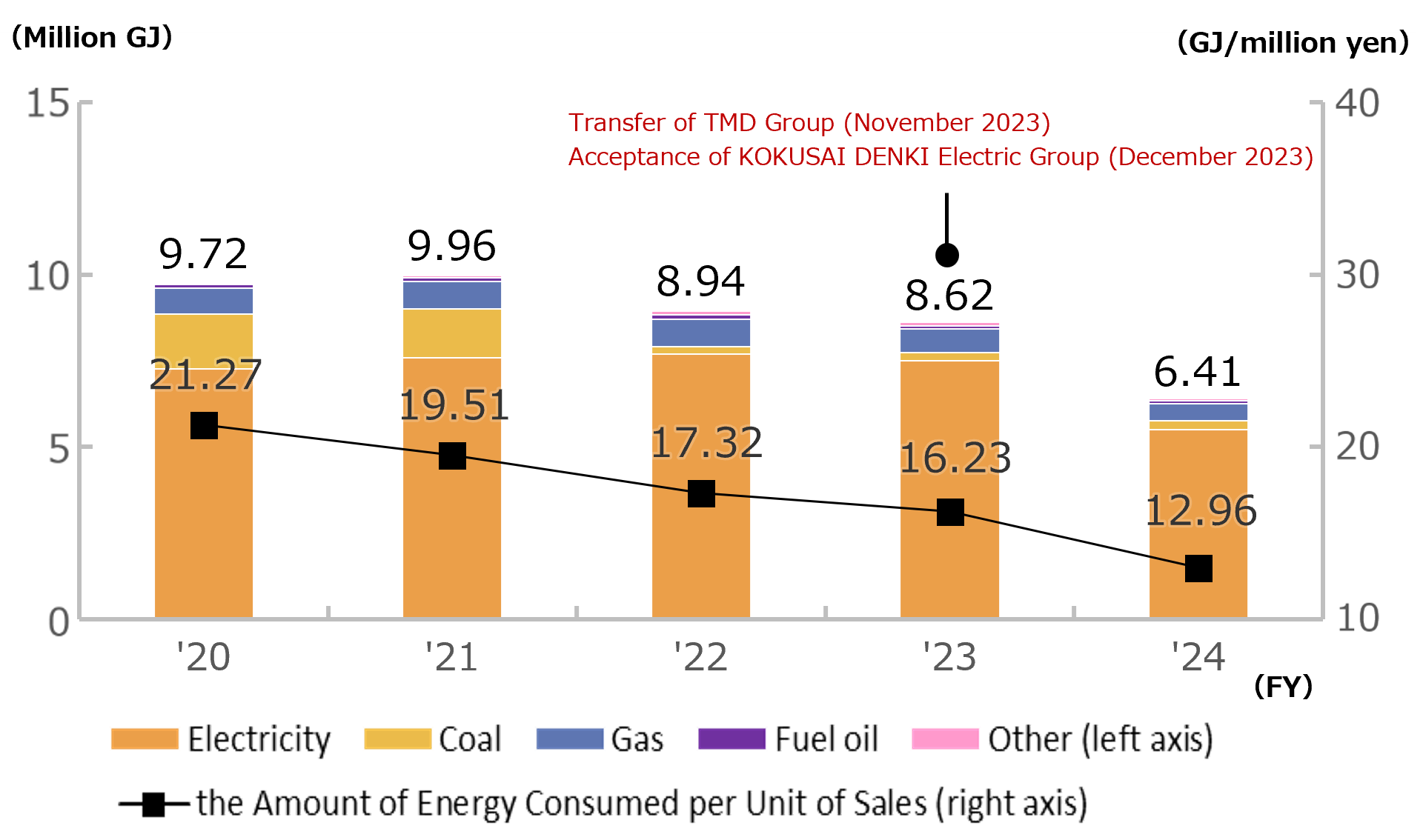
*1 Nisshinbo Holdings Inc. (the "Company") excluded TMD Group, which was a consolidated subsidiary, from the scope of consolidation, due to its transfer, which took place on November 30, 2023. As a result, data for TMD Group is included in the aggregation up to November 2023.
*2 On December 27, 2023, the Company included KOKUSAI DENKI Electric Group within its scope of consolidation, and data for the group is included from FY2024.
*3 On November 28, 2024, the Company included ARGONICS GmbH and ARGONAV GmbH within the scope of consolidation as subsidiaries in the Wireless and Communications business. However, data for these companies is not included in the FY2024 data.
Amount of Energy Consumed by Business
The Micro Devices business accounts for the largest portion of energy consumed, at 1.82 million GJ down 13% YoY, followed by the Textiles business at 1.53 million GJ down 12% YoY.
Amount of Energy Consumed by Business
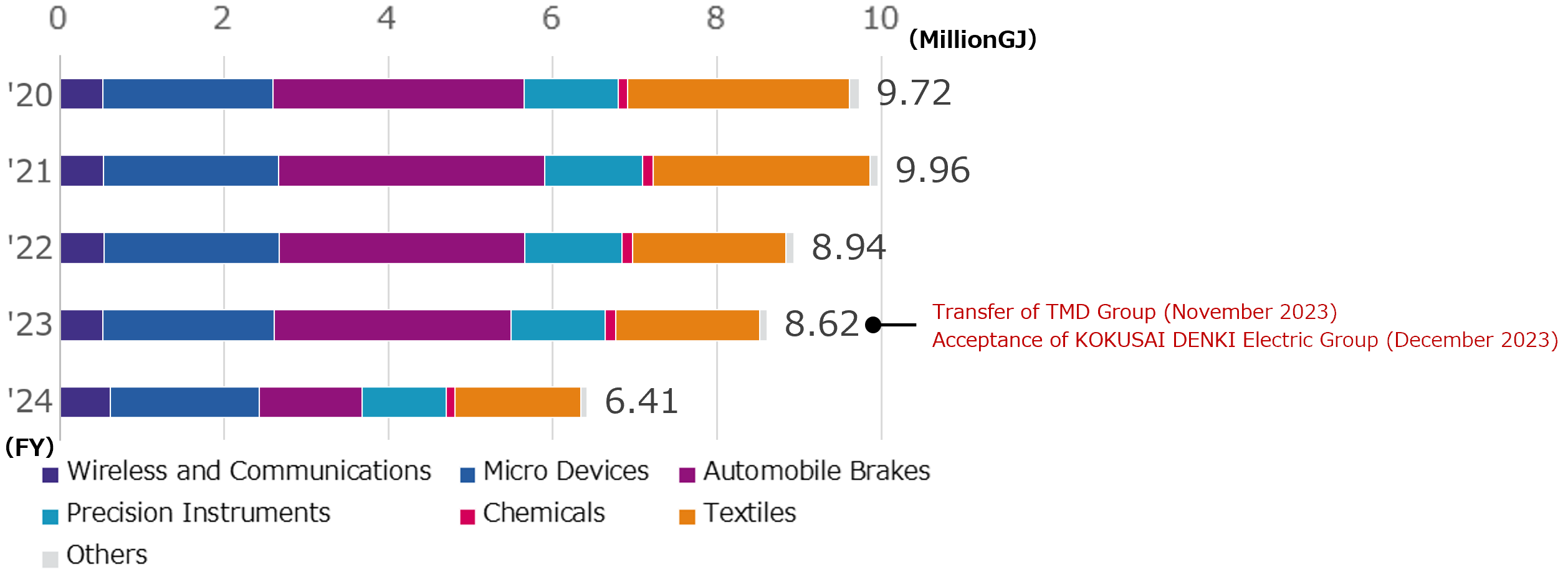
*1 Nisshinbo Holdings Inc. (the "Company") excluded TMD Group, which was a consolidated subsidiary, from the scope of consolidation, due to its transfer, which took place on November 30, 2023. As a result, data for TMD Group is included in the aggregation up to November 2023.
*2 On December 27, 2023, the Company included KOKUSAI DENKI Electric Group within its scope of consolidation, and data for the group is included from FY2024.
*3 On November 28, 2024, the Company included ARGONICS GmbH and ARGONAV GmbH within the scope of consolidation as subsidiaries in the Wireless and Communications business. However, data for these companies is not included in the FY2024 data.
Energy Conservation Law-based Business Operator Classification Evaluation System
The purpose of the implementation of the Business Operator Classification Evaluation System is to classify all business operators that are required to submit regular reports under the Energy Conservation Law into four categories—S, A, B, and C—and then to enable operators to objectively assess the status of their energy conservation activities. The top-tier S class includes businesses that achieved an average reduction of 1% or more in energy intensity over a five-year period. These results are published annually on the website of the Agency for Natural Resources and Energy, and this evaluation covers reports submitted for the FY2020–2024 period.
The results of the FY2024 Energy Conservation Law Business Operator Classification Evaluation have been announced, and the following eight companies in the Nisshinbo Group received the highest rating of S.
Best S-Class
- Nisshinbo Holdings, Inc.
- Nisshinbo Micro Devices, Inc.
- Nisshinbo Micro Devices AT, Inc.
- Nisshinbo Micro Devices Fukuoka, Inc.
- Nisshinbo Brake, Inc.
- Nisshinbo Mechatronics, Inc.
- Nanbu Kasei, Inc.
- Nisshinbo Chemical, Inc.
Specific Activities of the Group Companies
LED Lighting Fixtures at Ueda Distribution Centre
Japan Radio Co., Ltd. is promoting the use of LED lighting fixtures at its Ueda Distribution Center with a plan to convert all lighting in the distribution center to LED over a five-year period starting in 2021.
In FY2024, the fourth year of the plan, 532 lighting fixtures on the second and fifth floors of the north building were converted to LED. The switch to LEDs is expected to reduce electricity consumption by 130 MWh per year.
By the end of 2024, work to convert 1,894 luminaires installed in the distribution centers to LEDs will have been completed, and 98.7% of the luminaires in the distribution centers will have been converted to LEDs. This means a reduction in electricity consumption of 439 MWh compared to before the switch to LEDs.
In 2025, the remaining 25 emergency lighting fixtures on the fourth floor of the north building and the exterior area will be converted to LED lighting fixtures. This will complete the conversion of the Ueda Distribution Center to LEDs as planned.
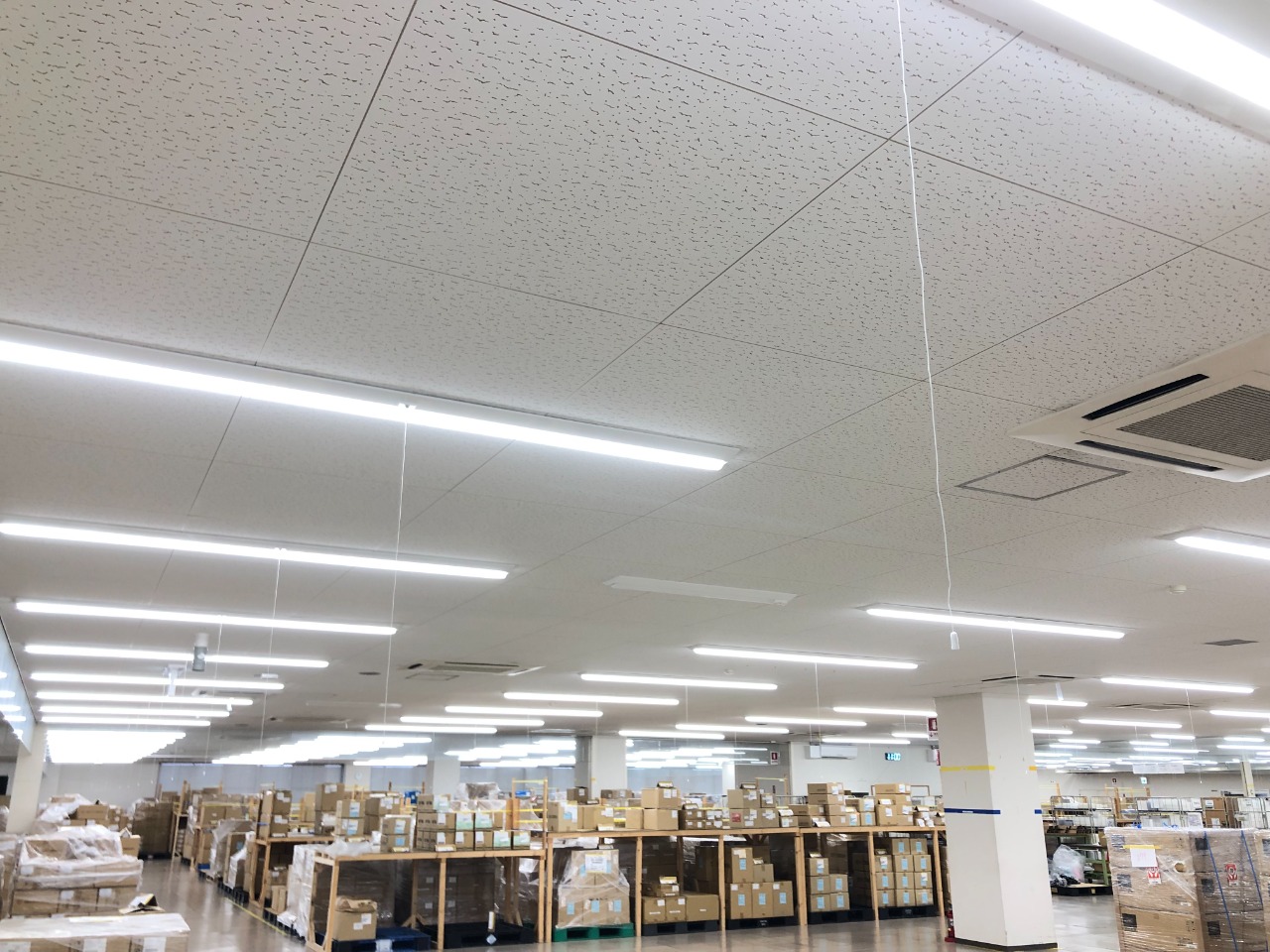
Energy-Saving Measures Through the Application of Heat Shielding and Thermal Insulation Paint on Outdoor Air-Conditioning Units
KOKUSAI DENKI Electric Inc. Tokyo Works applied coatings with heat shielding and insulation effects to 89 outdoor air-conditioning units, 445 m2 of concrete floor surface, and refrigerant piping in the WW building as an energy-saving measure for air-conditioning units.
The first phase of the installation was carried out in April 2024 on one-quarter of the area. After confirming the effectiveness of the coating, the remaining three-quarters of the area was covered in December, completing the installation on all air-conditioning units on the roof of the WW building. This is expected to reduce the electricity consumption of the outdoor air-conditioning units by around 10%.
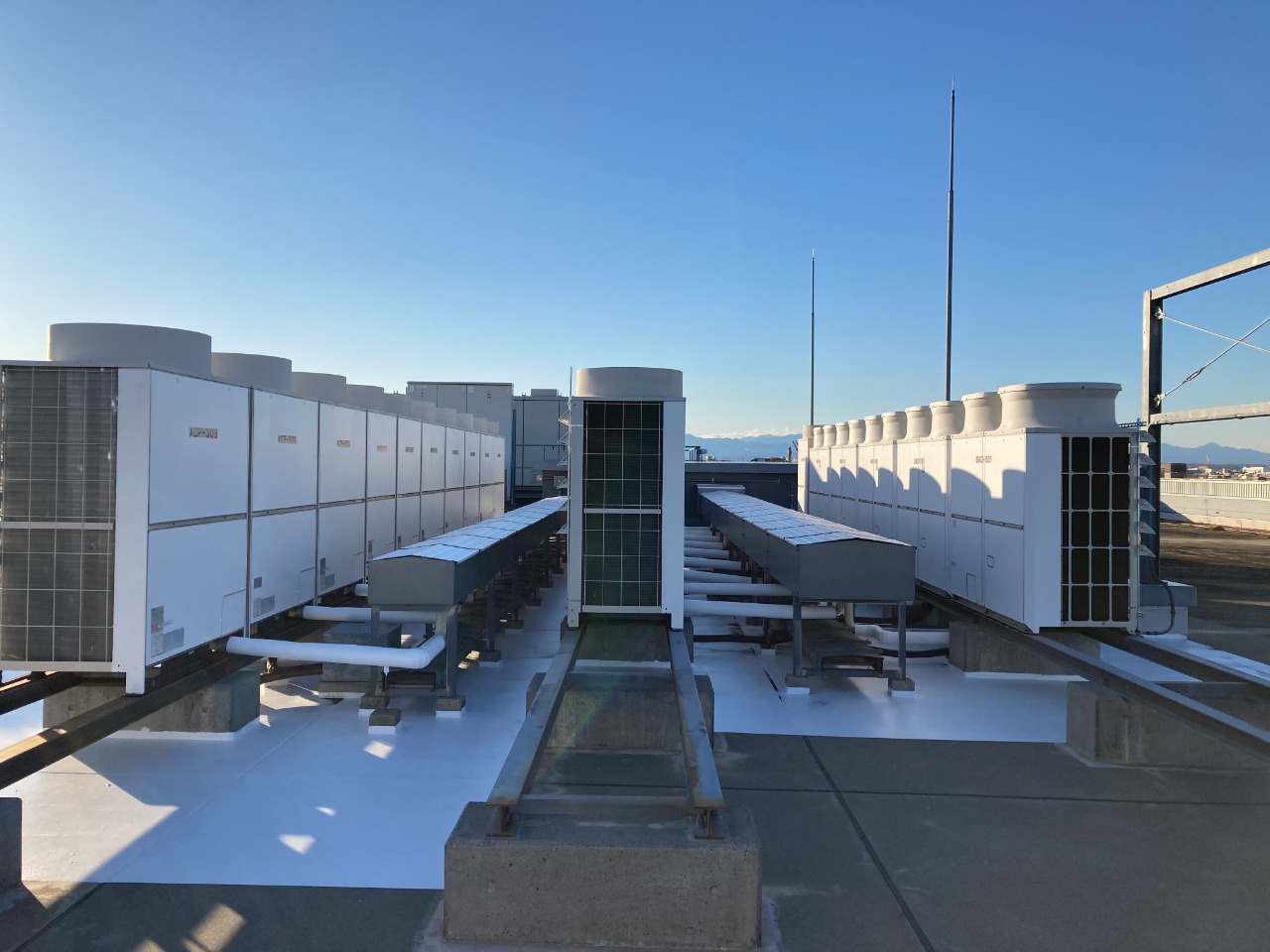
Energy Savings Through Inverter Control of Production Facility Cooling Water Pumps
The Kawagoe Plant of Nisshinbo Microdevices Inc. is equipped with four pumps for transporting indirect cooling water for the production equipment in the clean room of Building 229. In the event of an abnormal shutdown or sudden pressure drop in these pumps, the pressure was previously adjusted using valves, and water was pumped at a higher pressure than normal to prevent pressure drops and fluctuations from affecting the production equipment, which then resulted in excessive power consumption.
As a solution to this problem, the pressure adjustment was changed from valves to inverter operation with constant monitoring and control of the water supply pressure, and the number of motor revolutions was controlled. As a result, constant pressure could be maintained, and a reduction of approximately 270 MWh (greenhouse gas emissions: 87.0 t-CO2) per year is expected.
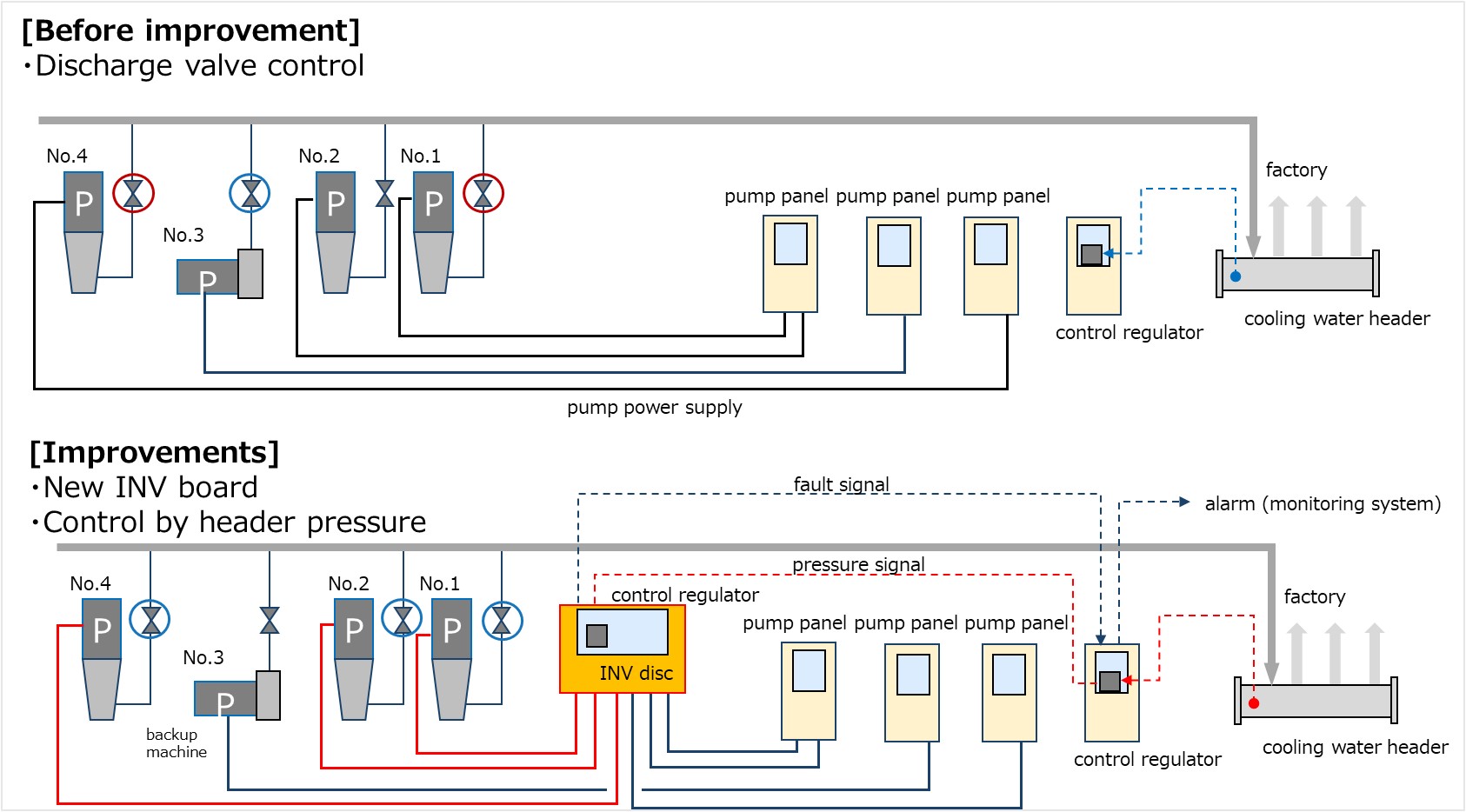
Reduction of City Gas Emissions by Changing Acid Wastewater Treatment Methods
At the Yashiro Plant of Nisshinbo Micro Devices Inc. acid wastewater discharged from the production line was treated with steam and discharged into the sewage system. By changing this steam treatment to chemical treatment, the steam used was reduced, resulting in a reduction of approximately 180,000 m3/year of city gas.
Acid wastewater discharged from the production line contained hydrogen peroxide, so it was treated together with alkaline wastewater by thermal decomposition using steam. However, by separating the treatment of acid wastewater containing hydrogen peroxide from alkaline wastewater and changing to chemical treatment, the use of steam was reduced, and the use of city gas to produce the steam was then also reduced. The reduced use of steam also led to a reduction in water consumption of approximately 2,000 m3/year.
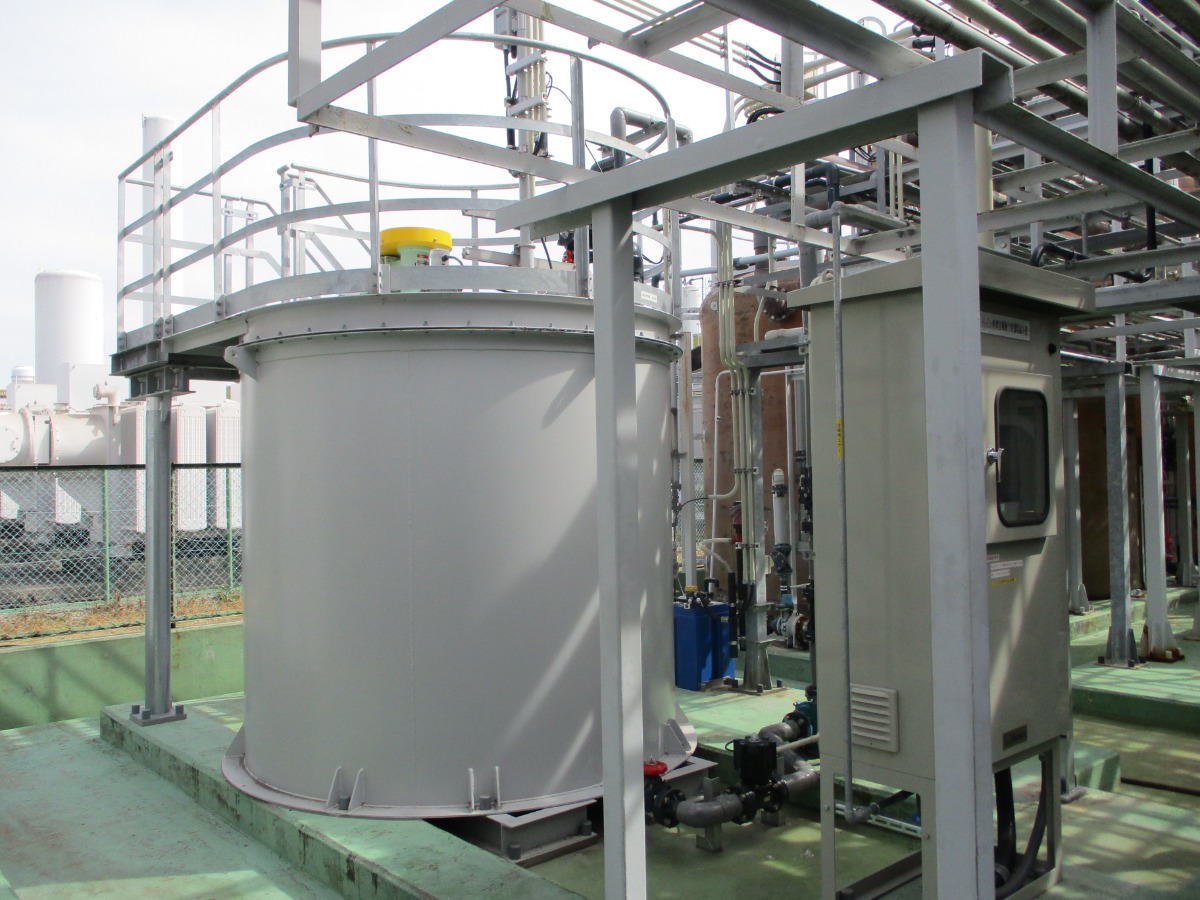
Reduction of Electricity Consumption by Power and Production Equipment
Nisshinbo Micro Devices Fukuoka Co., Ltd. implemented the following energy conservation measures for its power and production equipment with the goal of reducing electricity consumption by at least 1% (2.55 MWh/year) compared to the previous fiscal year and by at least 15% (5,322 MWh/year) compared to FY2014 by the end of FY2024.
- ①Added an inverter control panel to the 37 kW IE3 motor of the ambient temperature cooling water supply pump equipment, which achieved a reduction of 79 MWh/year (greenhouse gas emissions: 30 t-CO2/year) through frequency-controlled operation.
- ②Replaced the 30 kW motor with an IE3 (Top Runner) motor during the update of the RO high-pressure pump No. 2 in the pure water system, achieving an annual reduction of 7.5 MWh (greenhouse gas emissions: 2.9 t-CO2/year).
- ③To prevent power consumption due to heat loss from the inlet during the waiting period for diffusion furnace processing, Nisshinbo Micro Devices Fukuoka implemented a measure to cover the furnace with end caps after storing quartz boats inside the furnace for 183 days per year, resulting in a reduction of approximately 7.3 MWh/year (greenhouse gas emissions: 2.8 t-CO2/year).
- ④During production downtime, by adjusting the standby temperature of diffusion furnaces for equipment with long product waiting times, approximately 118 MWh/year (greenhouse gas emissions: 45 t-CO2/year) was reduced.
Additionally, because of measures for the implementation of production downtime days resulting from a 21% reduction in production load compared to the previous fiscal year, the total electricity consumption for FY2024 was 25,477 MWh/year, a decrease of 10.0% compared to the previous fiscal year, amounting to 2,876 MWh/year (greenhouse gas emissions: 1,093 t-CO2/year), and a reduction of 27.9% compared to FY2014, amounting to 9,838 MWh/year (greenhouse gas emissions: 3,738 t-CO2/year). Nisshinbo Micro Devices Fukuoka Co., Ltd. will continue to implement energy-saving measures moving forward.
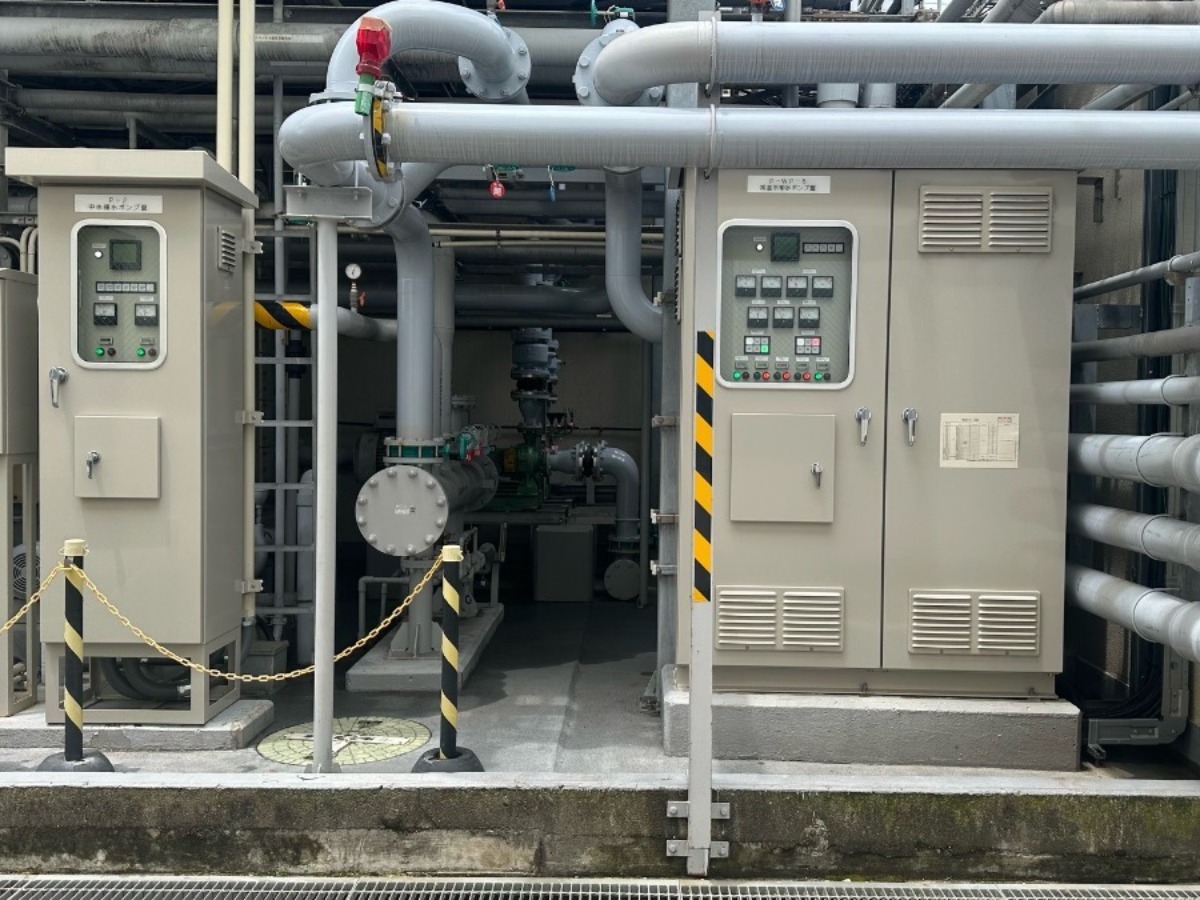
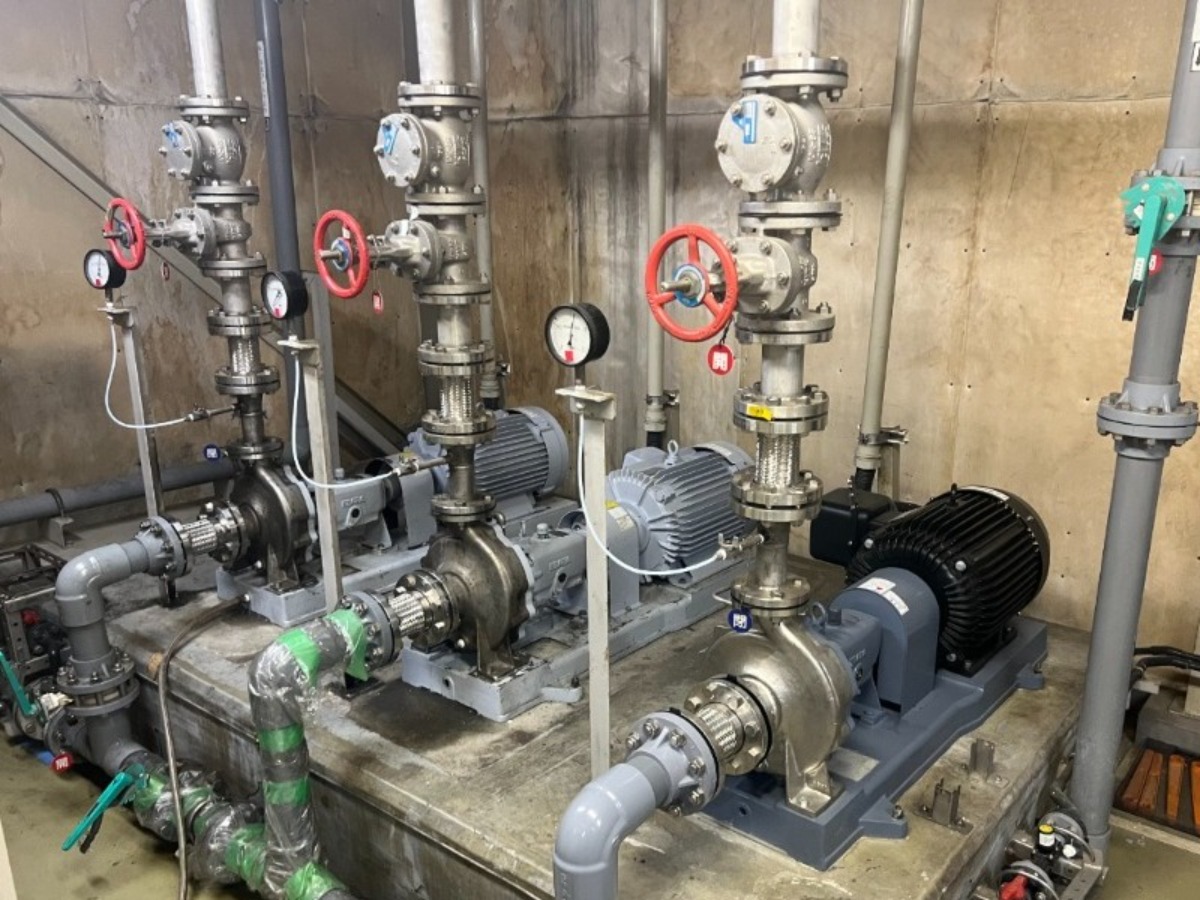
Energy-Saving Measures in the Assembly Process
Nisshinbo Micro Devices, Thailand, installed central vacuum pumps to save energy in the vacuum generation system for the IC (integrated circuit) 1 assembly process.
By replacing 41 conventional small vacuum pumps and 90 vacuum ejectors with three high-efficiency inverter-type central vacuum pumps (two pumps are operated as normal operation), the company achieved energy savings in the vacuum generation system for the IC 1 assembly process.
The introduction of the central vacuum system in the IC 1 assembly process from June 2024 resulted in a reduction of 606 MWh (greenhouse gas emissions: 287 t-CO2) in FY2024 over a six-month period.
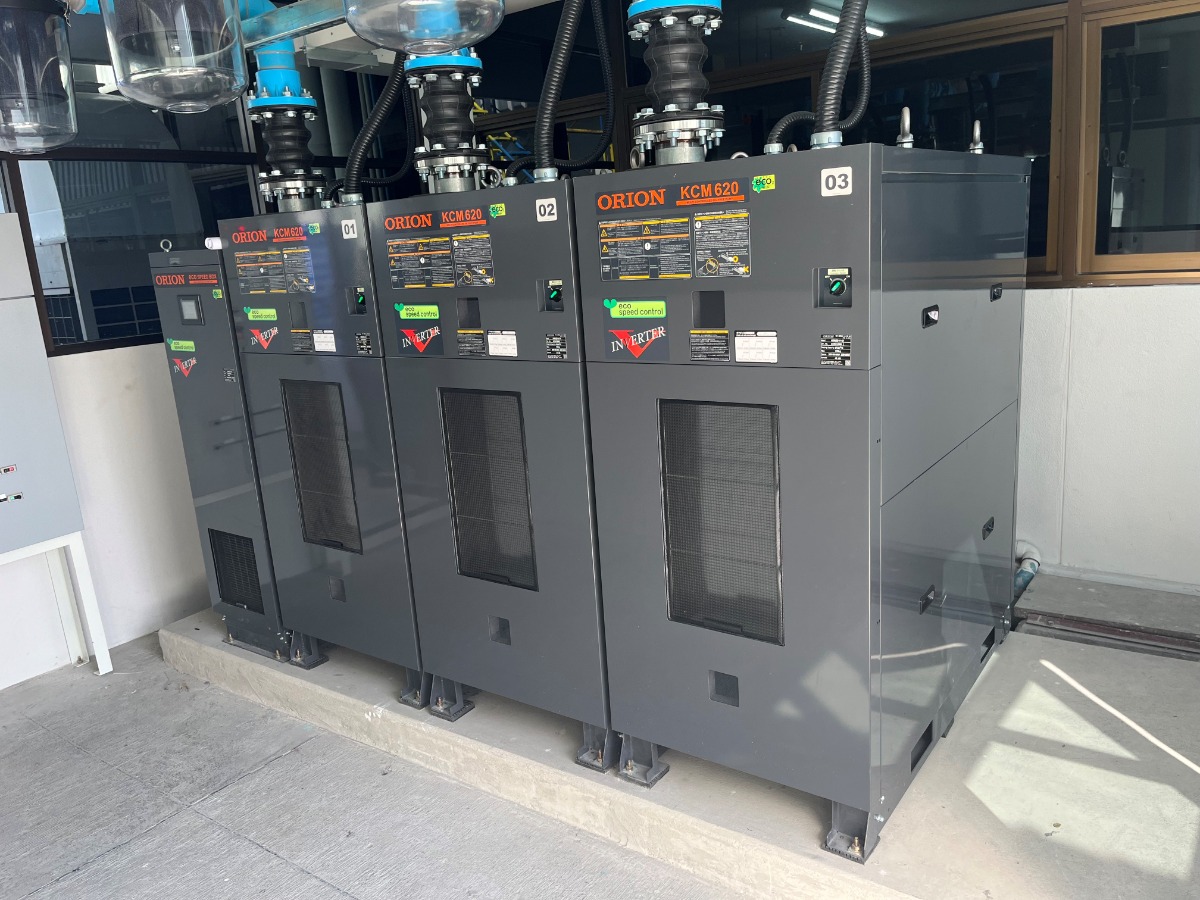
Energy Conservation Through Compressor Room Renovation
Saeron Automotive Corporation in South Korea has traditionally operated its compressor room continuously during the nighttime hours from December to February, which is winter, and on weekends.
This conventional operation method was inefficient in terms of energy consumption, but it was implemented as a necessary measure to protect the equipment. This was because cold air from outside was flowing into the room through unnecessary ducts installed in the roof structure of the compressor room, which posed the risk of freezing the pressure sensors and pipes inside the compressor equipment.
To address this issue, the company removed the unnecessary ducts to prevent cold air from entering from outside. In addition, to prevent the internal piping and sensors of the compressor from freezing, Saeron Automotive Corporation first installed oil and water removal filters and then strengthened the insulation of the pressure sensors. As a result, the risk of freezing was reduced.
The renovation of the compressor room reduced the unnecessary energy consumption and enabled Saeron Automotive Corporation to maintain stable equipment even in winter. The company will continue to identify and implement energy-saving measures.
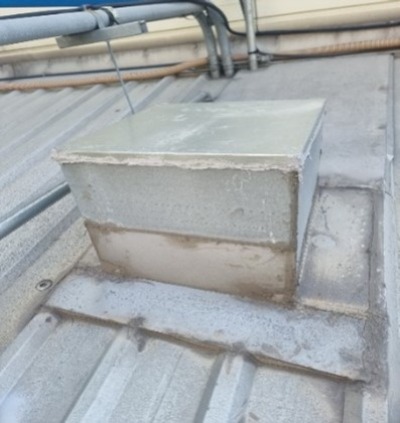
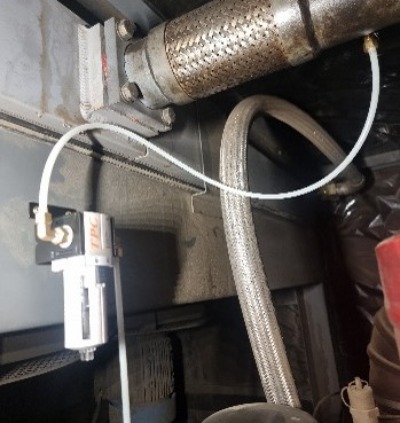
Cross-Cutting Environmental and Energy-Saving Activities at All Group Sites
Nisshinbo Mechatronics Inc. conducts cross-sectional activities on a monthly basis at all Group sites, including Nanbu Plastics Co., Ltd. The key theme of these activities is energy-saving activities to reduce greenhouse gas emissions with the aim of reducing annual greenhouse gas emissions by 1,000 t or more, and issues are formulated and information shared.
Energy-saving activities are being promoted with a focus on equipment common to all Group sites, such as changes to compressor pressure settings and the use of LED lighting.
In addition, an Energy Efficiency and Conservation Manual, which compiles examples of measures taken, is being deployed at all Group sites. The company also sponsors energy efficiency study sessions to promote activities while expanding the knowledge, improving the skills, and sharing information on energy efficiency and conservation with the personnel in charge at all Group sites.
As a result of these activities, in FY2024, a total of 275 energy-saving measures were implemented annually at all Group sites, which reduced greenhouse gas emissions by 1,084 t per year (2,384 MWh per year reduction in electricity consumption). We will continue to implement energy-saving, renewable energy and electrification measures at all Group sites and promote greenhouse gas reduction activities.
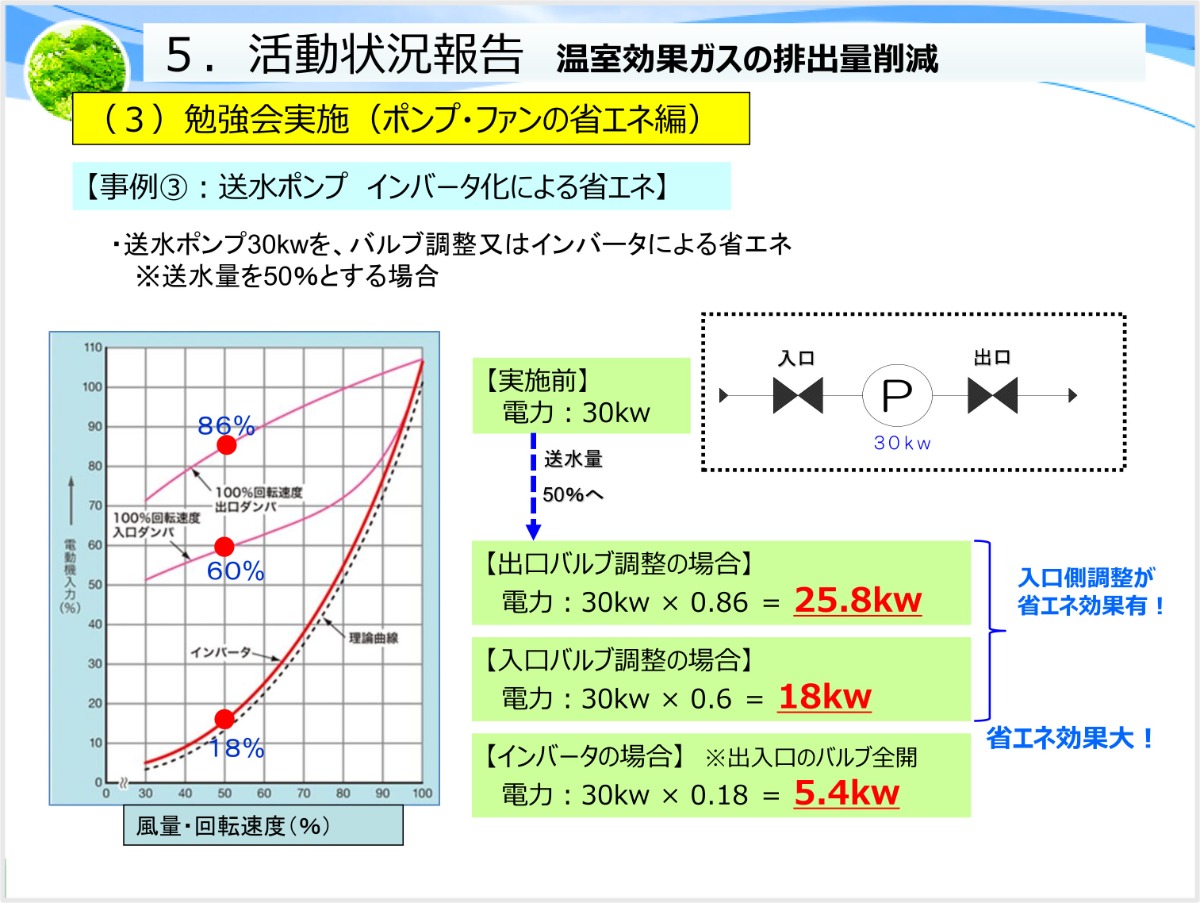
Energy Conservation Through Introduction of Central Mist Filter Equipment and Air Conditioning Equipment in Processing Areas
Nisshinbo-Continental Precision Machining (Yangzhou) Co., Ltd. in China is updating the mist collector equipment installed on each processing machine in response to increasingly stringent environmental requirements in China.
In updating its existing equipment, the company installed a central mist filter system to eliminate the mist collector system filters and connected the central mist filter system to the VOCs system piping for direct discharge. As a result, Nisshinbo-Continental Precision Machining (Yangzhou) reduced annual electricity consumption by 107.7 MWh in FY2024.
In addition, the company upgraded the energy-saving equipment in the air-conditioning system of one of its factories, changing it from energy efficiency level 3 to level 1. As a result, Nisshinbo-Continental Precision Machining (Yangzhou) reduced its annual electricity consumption by 526.9 MWh in FY2024.
These initiatives resulted in total energy savings of 634.6 MWh/year (annual reduction of 304.6 t-CO2). Nisshinbo-Continental Precision Machining (Yangzhou) will continue to respond to domestic demands for environmental consideration and strive to operate its factories in an environmentally friendly manner.
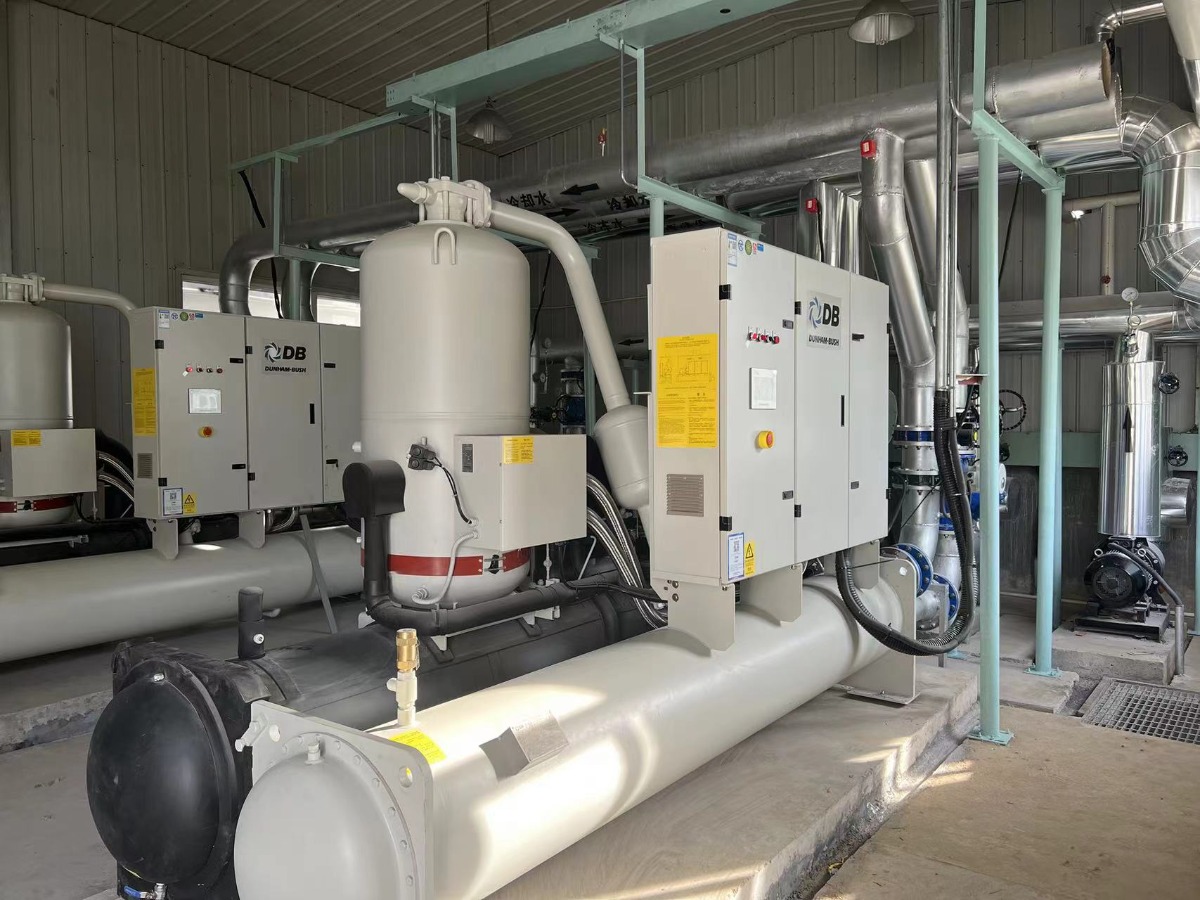
Energy Reduction Through Kaizen Activities
Nisshinbo Chemical Inc., Tokushima Plant, manufactures the resin additive CarbojiliteTM. As part of the FY2024 Kaizen activities, under the theme "Improving Productivity and Business Processes," the company conducted activities focused on reducing energy consumption in the manufacturing process of CarbojiliteTM.
Nisshinbo Chemical looked into ways to shorten the manufacturing cycle time for oil-based products and reduced the process time by revising the end temperature of the cooling process for one product. In 2024, the company achieved energy savings of 2.1 MWh.
In the cleaning of manufacturing equipment after the production of CarbojiliteTM, the cleaning solvent is heated, and the residual components in the equipment are dissolved over a specified period of time before the cleaning solvent is cooled. Previously, a significant amount of energy was used for heating and cooling the cleaning solvent.
In response, Nisshinbo Chemical optimized the cleaning conditions for each product through Kaizen activities, which eliminated the need for heating and cooling of cleaning solvents in the cleaning process for four product types and reduced the cleaning process time for ten product types. In FY2024, the company achieved energy savings of 9.9 MWh for the former and 0.9 MWh for the latter.
Furthermore, by reducing the delivery pressure of the cooling liquid pump that circulates inside the manufacturing equipment, Nisshinbo Chemical achieved a reduction of 10.8 MWh in energy consumption in FY2024. Through these Kaizen activities, the company achieved a total energy reduction of 23.7 MWh in FY2024.

